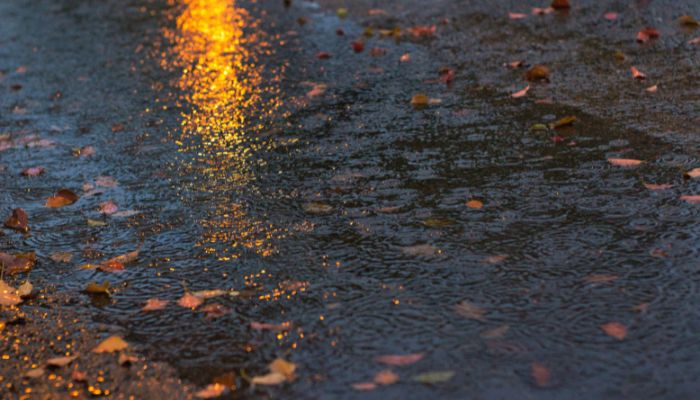
Ever feel like you just can’t catch a break from the rain? Some days it feels like the skies have it out for you, opening up the floodgates just as you step out the door. But what if someone really did have control over the rain? Legends from China and Madagascar tell of those with the power to manipulate the heavens.
In rain myths, “the Chinese rain-master” and “the Madagascan myth” both feature
The legendary Chinese rain master was said to possess magical powers allowing him to control the heavens. According to myth, he could summon rain and storms upon command. His name was Yu Shi and he served under Emperor Yu the Great.
As the story goes, during a time of terrible drought and famine, the Emperor sought help from mystics and magicians across the kingdom. None were successful until Yu Shi arrived. With a wave of his fan and chanting of secret spells, dark clouds gathered and rain fell, ending the drought. The Emperor was so grateful he made Yu Shi his official “rain master”.
For years after, Yu Shi would conduct elaborate rituals and ceremonies to beseech the rain gods for their favor. He would fast, meditate and make sacrifices to gain their goodwill. Once he deemed the time was right, he would perform a sacred rainmaking dance while reciting magical incantations. Legend says the clouds would form and rain would pour from the heavens, sometimes for days.
The rain master’s powers were said to be so great that he could also stop rain and disperse clouds with a single command. While we may be skeptical today of Yu Shi’s supposed mystical talents, for the ancient Chinese he served as a symbol of humanity’s eternal hope to influence forces of nature far beyond our control. His legend has endured for centuries, a testament to the timeless power of myth.
How the Rain Master Used Dragon Energy to Control the Weather
According to Chinese mythology, the Rain Master was a Taoist magician who could summon rain
using spells, charms and by channeling the energy of dragons. The Rain Master would climb high
mountains where dragons were thought to live. There, he would perform a ritual dance and play
music to capture the dragon’s attention and respect.
How the Rain Master Harnessed Dragon Energy
The Rain Master believed that dragons controlled the rain and by harnessing their power, he could
make rain fall. His dance was meant to demonstrate his spiritual strength and magic ability to the
dragons. If impressed, the dragons would grant him temporary control over the rain. The Rain
Master would then direct the dragons to gather rainclouds and summon a mighty storm.
People would call upon the Rain Master when drought threatened the land. He was seen as a hero
who could save crops and end famine. However, the Rain Master had to be very careful. If he
angered the dragons or failed to show proper respect in the ritual, the dragons might punish him by
denying rain or even causing destructive floods!
The legend of the Rain Master and his dragon magic has endured for centuries. While we no longer
believe rain is controlled by dragons, the myth highlights how desperate people were to find ways to
influence the weather at a time when so much depended on favorable conditions and good harvests.
The Rain Master gave people hope that mankind could prevail against the forces of nature through
spiritual means, even if just for a little while.
The Mythical Rain Queens of Madagascar
The mythical rain queens, or Lalamby, of Madagascar were said to have possessed the power to control the heavens. According to legend, the rain queens inherited a magical charm that gave them the ability to make rain. They would perform an annual rainmaking ceremony in which they would bathe in a sacred lake and then dance to summon the rain.
- The rain queens belonged to the Merina ethnic group and ruled over the central highlands of Madagascar for hundreds of years until the late 19th century. The role of rain queen was passed down through the female line.
- The rain queens were revered by their people and seen as semi-divine. They lived in isolation and were forbidden to marry or have children. Their subjects would bring them gifts and make sacrifices to win their favor and ensure good harvests.
- The mythical powers of the rain queens have endured in Malagasy folklore. Even today, some believe the ruins of the queen’s palace still radiate magic and that the sacred lake retains the power to heal the sick.
- The legend of the rain queens provides a glimpse into the spiritual beliefs of the early inhabitants of Madagascar. They attributed natural phenomena like rain to the influence of ancestral spirits and put their faith in the magic of their queens to keep the land fertile.
The last known rain queen, Queen Ranavalona III, ruled until 1896 when the French colonized Madagascar. The new rulers ended the traditional monarchy, though the rain queens live on in Malagasy mythology and have become an important part of the country’s cultural heritage. The rain queens are remembered as a symbol of feminine power and Madagascar’s long and rich history of spiritual mysticism In rain myths, “the Chinese rain-master” and “the Madagascan myth” both feature.
The Rituals and Powers of the Rain Queens
The Rain Queens, or Modjadji, of the Lobedu people in South Africa are said to possess mystical rainmaking powers. For centuries, the Rain Queens have performed sacred rituals to summon the rains and ensure good harvests.
The Initiation
When a Rain Queen is initiated, she goes through a secret ceremony where she is introduced to the magic and medicines that are said to give her control over the weather. She learns chants and dances used to call the rain, as well as how to prepare special potions from herbs and sacred rainmaking relics.
The Rainmaking Ritual
To make rain, the Rain Queen would perform a special rainmaking dance while her attendants beat drums and sing ancient rain-calling songs. The Queen would chant incantations to summon dark rain clouds and storms. She would also sprinkle special potions and burn certain herbs and woods that were thought to attract and produce rain.
The Power of the Rain
The Rain Queen was believed to possess rain stones, or magical relics, that gave her dominion over the rain. She kept these sacred objects hidden away and used them in her rituals and potions. Her people believed that if the Rain Queen was displeased or neglected her duties, she could withhold rain and cause droughts, famine and hardship. To appease the Rain Queen, the people would bring her gifts and tribute.
For many centuries, the Rain Queens held enormous power and influence over their people through their supposed ability to control the rains. Though skepticism has grown, the Rain Queen’s rainmaking rituals remain an important cultural tradition and link to the past. The mystical powers of these “rain queens” live on in the legends and folklore of their people.
Comparing the Chinese and Madagascan Rain Myths
The Chinese and Madagascan rain myths share some similarities but also differ in key ways. Both feature a rain master who can control the heavens, but the stories originate from distinct cultures and time periods.
The Chinese myth centers around Yu the Great, a mythical king who gained the ability to summon rain after fixing channels in the Yellow River that were flooding surrounding villages. According to legend, Yu’s rainmaking powers were a gift from the river god in thanks for Yu’s great service. When China was plagued by drought, Yu would offer sacrifices and prayers to bring the rains and save his people.
In contrast, the Madagascan myth involves a more sinister rainmaker. People would call upon a mpamosavy, or shaman, to end droughts by threatening the heavens. The mpamosavy would climb a high hill and shout insults and curses at the sky to provoke rain. The rain was believed to fall out of anger in response to the mpamosavy’s actions. Unlike the Chinese myth where rain was a reward, in Madagascar it was something that could be coerced through fear and aggression.
Both stories show how early cultures grappled with controlling forces beyond their understanding. Whether by honor, prayer, or supernatural means, the ability to manipulate the weather and ensure rainfall was seen as a power that demanded reverence and respect. Comparing these myths side by side highlights how societies developed their own explanations for the mysteries of the natural world.
Conclusion
So there you have it, two fascinating myths from opposite sides of the world that show our shared human desire to influence the heavens. Though separated by thousands of miles and distinct cultures, the Chinese rain-master and Malagasy rain-maker both represent that innate human yearning to exert some control over the forces of nature that shape our lives. Maybe that yearning comes from living so long at the mercy of the weather, subject to the whims of the rain gods or lack thereof. Or maybe it’s just human nature to always want to push the boundaries of what’s possible, even if it’s making rain fall from a clear blue sky like In rain myths, “the Chinese rain-master” and “the Madagascan myth” both feature. Either way, these myths endure because they speak to something deep within us that longs to manipulate the world around us, for good or for ill. Even if we’ve gained more scientific insights today, that longing still remains.





More Stories
Unlimit Casino Review and Bonuses 2025
Binance Thorchain quiz answers cointips.info
Notice comercio e Intermediacao de negocios Eireli flamboyant Servicos Administrativos